China and the Space-Specific Treaties
Since 1967, there have been a total of five multilateral treaties with a specific focus on space, namely:
- 1967 Outer Space Treaty;
- 1968 Rescue and Return Agreement;
- 1972 Liability Convention;
- 1975 Registration Convention; and
- 1984 Moon Agreement.
The latter four treaties speak to or expand on principles set out in the original Outer Space Treaty. Of the five treaties, China is a party to four of them excluding the Moon Agreement.
As a party to these treaties, China has obligations on the rescue and return foreign astronauts, third-party loss and/or damage resulting from their space objects, registration and licensing, as well as general obligations such as not acting aggressively in outer space.
IMPORTANT TO KNOW
The State Administration for Science, Technology and Industry for National Defence (SASTIND) is largely in charge of the administration of China’s civil space program, including licensing, registration and launch services.
The China Great Wall Industry Corporation (CGWIC) is China’s largest commercial provider of launch services through the Long March launch vehicle.
The Chinese law on registration and licensing
China has enacted two ‘ministerial’ regulations in order to implement their registration and licensing obligations under the Space-Specific treaties, these are:
- Measures for the Administration of Registration of Objects Launched into Outer Space 2001 (CHN) (‘Registration Measures‘); and
- Interim Measures on the Administration of Licensing the Project of Launching Civil Space 2002 (CHN)(‘Licensing Measures‘).
Ministerial regulations are considered some of the lowest priority rules in the Chinese legal system. As such, the two measures highlight China’s lack of emphasis on the development of their space legal regime as opposed to their significant efforts toward their space program itself.
IMPORTANT TO KNOW
The lack of a detailed space legal regime means that the administration of space activities, licensing and registration in China allows a large margin of discretion to Chinese authorities and officials.
Seek legal advice if:
- You are unsure what documentation to provide in applying for a registration or license in China; or
- You are unsure how to navigate the Chinese legal or administrative system and would like assistance.
Who are the launch service providers in China?
State-owned providers
Until recently, the China Great Wall Industry Corporation (CGWIC) was the only commercial entity in China that was authorised to provide launch services internationally via the highly successful Long March launch vehicle.
Private providers
China has recently allowed private launch providers to enter their space industry. Whilst a number of these operators have not yet had a successful in-orbit launch, they are internationally competitive in launch service costs.
These providers include LandSpace, OneSpace, ExPace, iSpace and LinkSpace.
Registering your space object in China
The Registration Measures 2001 (CHN) were largely enacted in order to fulfil China’s obligations under the Registration Convention. Where China launches or procures the launch of a space object it must register the space object on its own national register, as well as the United Nations register maintained by the UN Secretary-General.
How is a space object defined in China?
Whilst the Registration Measures 2001 (CHN) are essentially a restatement of the principles set out under the Registration Convention, China employs a broader definition of the term ‘space object’ than that under the Convention.
The Registration Convention defines a ‘space object’ as including the following:
“component parts of a space object as well as its launch vehicle and parts thereof.”
Implications
This is more a clarification than a definition and it leaves many questions unanswered.
In a longer statement than the Registration Convention, the Registration Measures 2001 (CHN) define a space object as the following:
“an artificial satellite, crewed spacecraft, space probe, space station, launch vehicle and parts thereof, and other human-made objects launched into outer space.”
Implications
Whilst the definition provides examples of what constitutes a ‘space object’, it ultimately includes any human-made object that enters outer space.
IMPORTANT TO KNOW
The Chinese definition of ‘space object’ is broader than the definition set out in the Registration Convention.
Under the Registration Measures 2001 (CHN), any human-made object that enters outer space will be considered a ‘space object’.
Who has to register the space object?
The national register is currently maintained by SASTIND through the Chinese National Space Administration (CNSA). As such, all space objects launched within China, or launched jointly by China, are to be registered with SASTIND within 60 days after their launch into orbit.
The government department, entity, individual or organisation which launches or procures the launch of the space object shall register it. If there are multiple parties involved, the ‘main owner’ shall register it.
Foreign operators in China
If a space object is jointly launched by China, or launched by a foreign operator within Chinese territory, it will be registered by the Chinese launch provider within the national register maintained by SASTIND.
If a space object has been jointly launched by China and another state, the Ministry of Foreign Affairs may be consulted on which state will register it with the UN international register.
The Registration Measures 2001 (CHN) require more information to be provided by an operator than outlined in the Registration Convention.
The information required includes:
- Registration number;
- Registrant;
- Space object owner;
- Basic characteristics of the space object;
- Launching enterprise of the space object;
- Launch vehicle name;
- Date, time and location of the intended launch;
- Basic orbital parameters of the space object; and
- Status of the launch and orbiting of the space object.
If your space object is registered by SASTIND in China, you will be required to amend the corresponding registry information under the following circumstances:
- Malfunction;
- Re-entry into the atmosphere;
- Break-up; and/or
- Cessation of function.
Getting a space licence in China
The Licensing Measures 2001 (CHN) were implemented in order to provide a regime for licensing civil space launches in China. China is internationally responsible for its national activities under Article IV of the Outer Space Treaty, meaning it is under an obligation to authorise and supervise the activities of its entities.
What information do I need to give in order to get my licence?
The ‘final’ owner of the spacecraft or its general project contractor has the responsibility of applying for a launch license from SASTIND. This must be done nine months prior to the planned date of launch.
Compliance with Chinese law
As a condition of the license, the applicant will need to ensure the project complies with a number of requirements including:
- Abiding by national and state laws, especially those regarding state secrets;
- Ensuring it does not endanger Chinese national security;
- Does not act inconsistently with China’s international obligations; and
- Does not endanger public safety.
In addition, the applicant must show they have the appropriate financial and technical capacity to undertake the project. They must also submit the relevant documentation authorising the project.
General documents required
- Space license application form with attachments outlining the applicant’s relevant qualifications; and
- Documentation or evidence that the project complies with national laws and regulations of China.
Domestic launches
- Details on the time of launch, technical requirements of any satellites, details of the launch vehicle and details on the launch and recovery of the relevant space object;
- Radio Station License from the Ministry of Information Industry;
- Reports on the safety of the design and supplementary documents outlining the potential effect on property and persons.
- Reports on the prevention of environmental pollution and space debris from the launch.
Foreign launches
If a project involves a launch in a foreign country, documentation on the orbital parameters of the launch, the launch vehicle and the frequency requirements of the project may be required.
Launches involving a foreign party
If a project involves a foreign party, SASTIND will also require the necessary security and confidentiality documents for that party.
What happens after you get your licence
Following your application, the Licensing Measures 2001 (CHN) state that SASTIND will review and determine the result of your application within 30 days of receiving it. It also confirms the ability to review a decision you do not agree with.
The nature of the permit
A permit holder must follow the specific conditions included with the permit or they may have their permit withdrawn. The permit will identify the details of the applicant, the project and launch, as well as the issuer of the permit. The permit will cease to be valid at the conclusion of the approved project.
Modifying or cancelling a permit
A permit holder must apply to SASTIND at least 90 days prior to the planned launch date in order to cancel or modify a valid permit.
Continuing supervision
Following the completion of a licensed project, the permit holder must report to SASTIND on the completion of the project.
Similarly, the Licensing Measures empower SASTIND and its officers to inspect the activities of a permit holder at any time and without notice.
IMPORTANT TO KNOW
If you breach the conditions of your permit, your permit may be withdrawn, and you will be prevented from making a further application for two years.
Similarly, administrative and criminal penalties may apply for conduct including:
- Concealing the truth;
- Damaging state practice;
- Fraud;
- Undertaking unauthorised projects; and/or
- Neglecting or abusing powers that result in a loss to the state.
Am I required to get insurance?
The Licensing Measures 2001 (CHN) require permit holders to obtain insurance to cover damage or loss to third parties, as well as insurance to cover damage or loss to the space object that will be launched.
WHAT TYPE OF INSURANCE SHOULD I GET?
Like a number of sectors in China, insurance services are limited to domestic providers. Two companies, in particular, have played a prominent role in facilitating Chinese space insurance, namely the People’s Insurance Corporation of China (PICC) and China Pacific Insurance Corporation (CPIC).
Potential operators should contact insurance providers in China to assess what policy may be appropriate and necessary for their potential launch. In general, the Chinese space insurance industry covers two sectors, satellite insurance and launch insurance.
Satellite insurance
- Covers any damage or loss during the manufacturing stage of a satellite.
Launch insurance (five categories)
- Pre-launch: the period from rocket assembly to intention to fire rocket engine;
- The period from intention to fire rocket engine to take-off;
- Liability: the period from intention to fire rocket engine to three years after launch;
- In-flight: the period from take-off to satellite separation; and
- Satellite:
-
- The period from intention to fire rocket engine to 30-180 days after launch; and/or
-
- The period in orbit.
-
Comparing foreign licensing regimes
Key features:
- Australian space law applies to space activities in Australia, and to Australian nationals conducting space activities abroad.
- Space operators are required to hold insurance of up to AUD$100 million under Australian space law.
- The Australian Space Agency charges costs for assessing applications for space licences and permits.
Primary regulator:
The primary regulator of space activities in Australia is the Australian Space Agency.
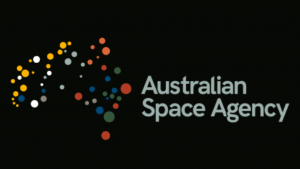
Want to learn more about space law in Australia? Visit our article on laws applicable to launch.
Key features:
- The New Zealand space licensing regime does not charge fees for an application, or for holding a licence or permit.
- New Zealand currently recognises licences from certain jurisdictions as meeting their licence or permit requirements.
- Australia and New Zealand offer equivalent space licences and permits.
Primary regulator:
The primary regulator of space activities in New Zealand is the NZ Space Agency.
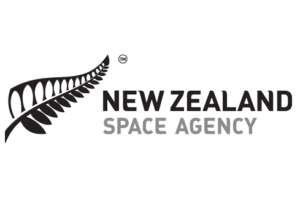
Want to learn more about space law in New Zealand? Visit our article on New Zealand space law.
Key features:
- The United States offers three different licences and permits: Launch/Re-entry Vehicles Specific Licence, Operator licence, Experimental Permits for Reusable Suborbital Rockets.
- The costs of launching activities in the United States depends on various factors, including: the launch vehicle used, size and destination of the payload and insurance requirements, among others.
- Licence holders are required to make a reciprocal waiver of claims with the relevant parties involved in launch or re-entry services under which each party agrees to be responsible for personal injury to, death of, or property damage or loss sustained by it or its own employees resulting from an activity carried out under the applicable licence.
- Space operators are subject to ongoing monitoring by the Federal Aviation Administration Authority to ensure compliance with licence conditions.
Government regulators:
The regulation of space activities in the United States is split between several federal government agencies:
- The Federal Aviation Administration (FAA)
- The Federal Communications Commission (FCC)
- The National Oceanographic and Atmospheric Administration (NOAA)
- The Department of Commerce

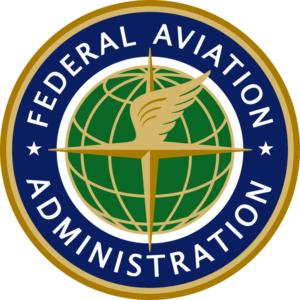
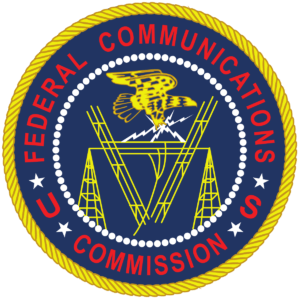
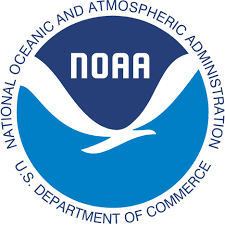
Want to learn more about space law in the United States? Visit our article on United States space law.
Key features:
- The United Kingdom offers licences for three primary licence activities: Operator, Spaceport and Range Control.
- The granting of licences is controlled by the prescribed Regulator.
- Regulations, including insurance requirements, are still in the process of being drafted.
Primary regulator:
The primary regulator of space activities in the United Kingdom is the UK Space Agency.

Want to learn more about space law in the United Kingdom? Visit our article on United Kingdom space law.
Key features:
- France separates ‘launch’ and ‘command’ phase, enabling ease in apportioning liability in the case of damage.
- France offers obtainable licences in addition to case-by-case authorisation, with lack of clarity surrounding costs.
- The French space licensing regime has clear insurance requirements and regulations regarding liability.
Primary regulator:
The primary regulator of space activities in France is Centre National d’Études Spatiales (CNES).

Want to learn more about space law in France? Visit our article on French space law.
Key features
- Launches are conducted through the Indian government, and there is an established commercial framework with government owned launch provider ‘Antrix’
- Indian launch vehicles have flight heritage, having successfully launched hundreds of foreign space objects
- There is a lack of legislation, leading to potential for discretion and uncertainty
Primary regulator:
The primary regulator of space activities in India is the Indian Space Research Organisation.
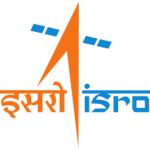
Want to learn more about space law in India? Visit our article on Indian space law.
Frequently Asked Questions
Neither SASTIND nor the Chinese National Space Administration (CNSA) have an accessible webpage through which you can seek further information.
As the sole commercial provider authorised for international space cooperation, the China Great Wall Industry Corporation (CGWIC) may help facilitate your access to the necessary authorities.
If you are unsure, you should seek assistance from a legal or professional service provider that has experience with the Chinese administration.
Ultimately, the decision on where you choose to launch will be up to you.
The lack of a comprehensive space legal regime in China may mean that the administration of space activities involves a relatively high degree of subjectivity on the part of Chinese authorities, as well as uncertain legal rights for the operator.
Equally, in addition to its commercial space success, China has an emerging private space sector that is offering highly competitive launch service prices comparative to the global market.
LINK SOURCES
Visit the AsianLII website for access to the Licensing Measures 2002 (CHN):
http://www.asianlii.org/cn/legis/cen/laws/imotaopfcslp771/
Visit the UNOOSA website for access to the UN Outer Space Treaties:
http://www.unoosa.org/pdf/publications/STSPACE11E.pdf
Visit the China Great Wall Industry Corporation website for more information on China’s commercial space launch service:
http://www.cgwic.com/index.html